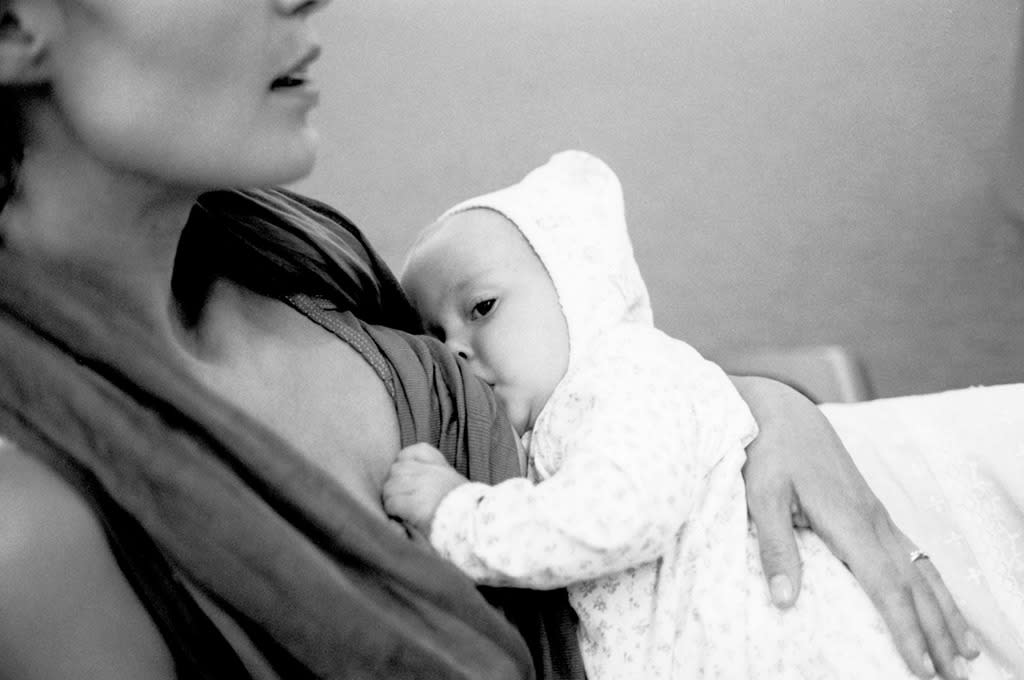Weird but True: A Woman’s Boobs ‘Eat’ Themselves After She’s Done Breastfeeding

Our bodies do amazing things. (Photo: Trunk Archive)
It’s no secret that a woman’s breasts become bigger when she’s breastfeeding, and when she’s done nursing her baby, they gradually go back to their pre-breastfeeding state.
However, scientists have wondered what actually causes a woman’s breasts to stop producing milk and go back to normal. Now they’ve discovered a reason, and it’s completely bizarre.
According to a new study published in the journal Developmental Cell, cells in a woman’s breasts “eat” dead cells left over from the breastfeeding process when she’s done lactating, effectively shrinking her breasts back down to size.
First, an explainer: A woman’s breasts are made up of a network of ducts that are covered by fatty tissue. When a woman is pregnant, hormones cause an increase in epithelial cells that line the ducts; these cells form alveoli, the tiny sacs that make milk. When a woman stops breastfeeding, the alveoli die and have to go somewhere.
Typically when cells die in your body, your immune system swoops in and you notice a reaction, like inflammation and pain; but this doesn’t happen when a woman stops breastfeeding. Instead, the epithelial cells devour the dead cells responsible for breastfeeding.
“The lactation process ends reasonably abruptly, so getting rid of the ex-lactating cells after a baby stops feeding is crucial,” study co-author Charles Streuli, Ph.D., director of the Wellcome Trust Centre for Cell-Matrix Research and a professor of cell biology at the University of Manchester, tells Yahoo Beauty. “If just left to the immune system to clear up the dead cells, it would cause a vast immune reaction and be hugely unpleasant (and potentially really dangerous).”
Scientists now say that the body’s ability to clear out the dead cells is due to a protein called Rac1, which is also responsible for milk production. To reach this conclusion, researchers took female mice and deleted the gene for Rac1. Their first litter of babies survived but were smaller than usual, but the babies they had after that died. The researchers found that without Rac1, dead cells and milk flooded the mice’s breasts, causing swelling and constant inflammation, which didn’t allow them to produce milk when they had babies again.
The absence of Rac1 could be problematic for a woman’s breast cancer risk — if a woman’s body isn’t able to clear away the dead lactation cells, the resulting inflammation may allow cancer cells to grow, Homayoon Sanati, M.D., a medical oncologist and medical director of the MemorialCare Breast Center at California’s Orange Coast Memorial Medical Center who did not participate in the study, tells Yahoo Beauty. “Correcting the cell death may be a mechanism for treating breast cancer,” he says.
Sanati calls the new findings “very interesting” but says that there’s more work to be done before Rac1 can be used in the fight against breast cancer. Streuli agrees and says his team is working on it. “We have other projects looking at the role of the Rac1-signaling pathway in breast cancer,” he says. “It is indeed crucial.”
Let’s keep in touch! Follow Yahoo Beauty on Facebook, Twitter, Instagram and Pinterest.


